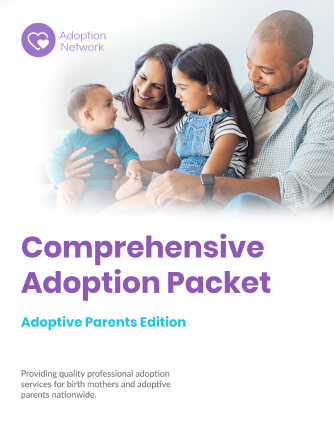
Unsupportive, Uninterested, or Unknown Birth Fathers
No matter the circumstances, however, it counts as a loss for every family. Such an absence can be largely effecting for child and parent alike, especially if the missing party is invisible by choice.
While a loss felt from this lack of commitment cannot be directly compared to other kinds of loss, it is important to acknowledge. Dealing with unsupportive, uninterested, or even entirely unknown birth parents presents an uniquely difficult set of challenges. Especially today, with the astonishing rise of single mothers in America, it is crucial to discuss the absence and effect of invisible father figures.
Family Dynamic Statistics
According to the New York Times families look very different today than they did even a few decades back. To put it in perspective, just 30 years ago less than 20% of births occurred outside of marriage. Today the rate is 41%. Of course, such a statistic doesn’t necessarily mean that this leaves only one parent, or even which parent, but it undeniably allows more room for the present paternal figure to be a single mom.
In fact, an article from the Washington Post says, “Single motherhood has grown so common in America that demographers now believe half of all children will live with a single mom at some point before the age of 18.” Truly, many of the statistics are surprising, but what is perhaps the most significant fact is that the rise of single motherhood is relevant to every American within every demographic. No matter the ethnicity, the net worth, the age, the number of degrees earned, or even the location, the numbers affect everyone either directly or by association.
While it is obvious that such things as education, opportunity, religion, and economic status affect these statistics, it is critical to first see that the mothers and the children those numbers represent are affected by such things even more than the numbers themselves. It’s a cycle, and ultimately, a lack of a parental figure in any form can have untold repercussions.
Education and Development
In an article titled The Rise and Downfall of the American Single Mother, Bryce Covert wrote, “As recently as 1990, only 10% of the births to white women with some postsecondary education but no college degree were outside of marriage. Today it’s tripled to 30%. It’s even worse for women with a high school degree or less: the figure is 60% for them.” Then, as is to be expected in situations that lack opportunity, a cycle forms from parent to child that is difficult to escape.
Sara McLanahan a Princeton sociologist, has this to say about the pattern: “The people with more education tend to have stable family structures with committed, involved fathers, the people with less education are more likely to have complex, unstable situations involving men who come and go.” She considers this to be creating larger gaps in the life chances of children, or rather, diverging destinies dependent on education and opportunity.
Opportunity and Economic Status
In 2013 the Huffington Post released an article titled 4.1 Million SingleMother Families Are Living In Poverty: Census. Hope Yen writes, “Even as the economy shows signs of improvement and poverty levels off, new U.S. census data suggests the gains are halting and uneven. Depending on education, race, income and even marriage, not all segments of the population are seeing an economic turnaround.” This is a point that is again supported by Jason DeParle in the aforementioned piece in the New York Times where he cites Andrew Cherlin, a sociologist at Johns Hopkins University, who said, “It is the privileged Americans who are marrying, and marrying helps them stay privileged.”
Again according to Forbes, research from the Brookings Institution found that it can be very difficult for children of single parents to rise up out of poverty. Meaning that 58% children raised in the poorest third of income levels that lived with two parents rose up, while only 44% of children of single parents were able to. In the end, it looks the same as education and opportunity, and we can all assume that these important pieces of life are inextricably linked, and also harder for single mothers to control on their own.
Ultimately and unfortunately, through observable patterns and cycles, it seems that the privileged stay advantaged and the educated stay knowledgeable, which then seems to put single mothers and their children in the same cycle. Humans are creatures of habits, so enforcing good habits on family and children will certainly have its benefits and positive outcomes. We are not our parents’, and single parenting is not hereditary, so it is possible to break the cycle.
At the same time, however, no one says that the effects of an unsupportive, uninterested, or entirely unknown birth father will always result in such drastic ways. Invisible fathers don’t mean any absence of mothers. In the end, children and parents, no matter the number, deserve equal opportunity to thrive.
DOWNLOAD the full “Pregnancy & Adoption Planning Guide” here
Available 24/7 to Answer Your Adoption Questions


Search Adoption Network
Speak with a Specialist 1-800-367-2367
